how do rocket engines work?
To get something up - you have have to push something down. Newton's third law. When you jump, you are pushing earth down to get some air. Rockets work the same way.
There are many rocket engines invented, a lot by soviets, but I'm gonna mention some popular ones.
Basics
Every engine has a combustion chamber and a nozzle which let's that high pressure inside the combustion chamber out while making it go really fast. That word fast is key to this. The more stuff you shoot and faster you can shoot it out the end, more thrust is generated.
The nozzle works the same way as if you put a thumb in front of the garden hose.
You should also know that pressure always flows from high to low.
How does the combustion chamber then get its pressure? That's the question which differentiates rocket engines.
Some different rocket engines
Cold gas engine
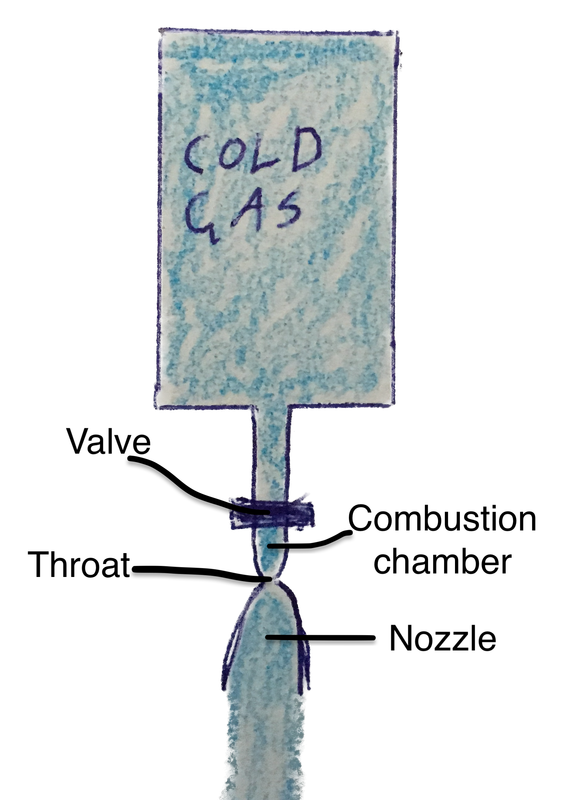
Think of this as a coke bottle with methos inside. You make a small hole in the bottle cap which leads to this "combustion chamber" talked above. Downside to this engine is that your pressure obviously gets lower overtime, so you get more trust in the start than end.
Monopropellant Pressure fed engine
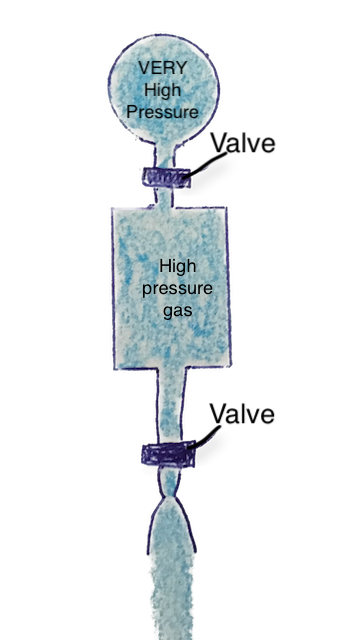
Almost the same as Cold gas engine, but in addition to high pressure gas tank, it also has a second even higher pressure gas tank. This is used to balance the main talk from it's pressure loss.
Bipropellant pressure fed engine

Now we get into explosives! When two reactive substances touch they cause heat and pressure. This makes our engines even more effective on top of leading already high pressure liquids into combustion chamber.
This engine has basically two pressure fed engines, but both are leading to same combustion chamber. One is filled with some oxidizer and the other with fuel like kerosine, so when they get together into the combustion chamber they react and cause heat and pressure, nozzle then converts to fast moving gas.
Open cycle engine
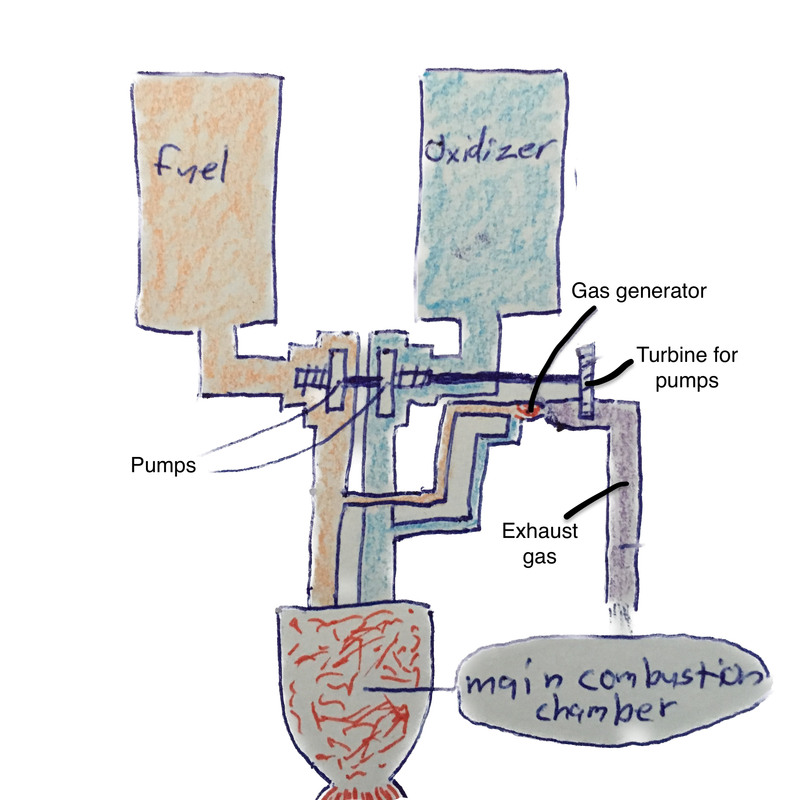
Instead of having pressure come from the propellant tanks themselves, this uses two pumps to convert fuel and oxidizer into high pressure before going into the combustion chamber.
Pumps get power from leading small amount of oxidizer and fuel into their own "combustion chamber" named gas generator. There they react and cause high pressure hot gas to flow through turbine to power both pumps. This small amount of oxidizer+fuel is lead to the gas generator after the pumps have made them high pressure, so there's a chicken - egg problem. Pumps power gas generator, while gas generator powers the pumps.
This is solved e.g. by somehow igniting some gas in the gas generator manually. Gas generator exhaust gas is then expelled outside, which gives open cycle it's name.
For example SpaceX merlin engine works this way. That is the engine which lands their Falcon 9 rockets.
Closed cycle oxigen rich engine
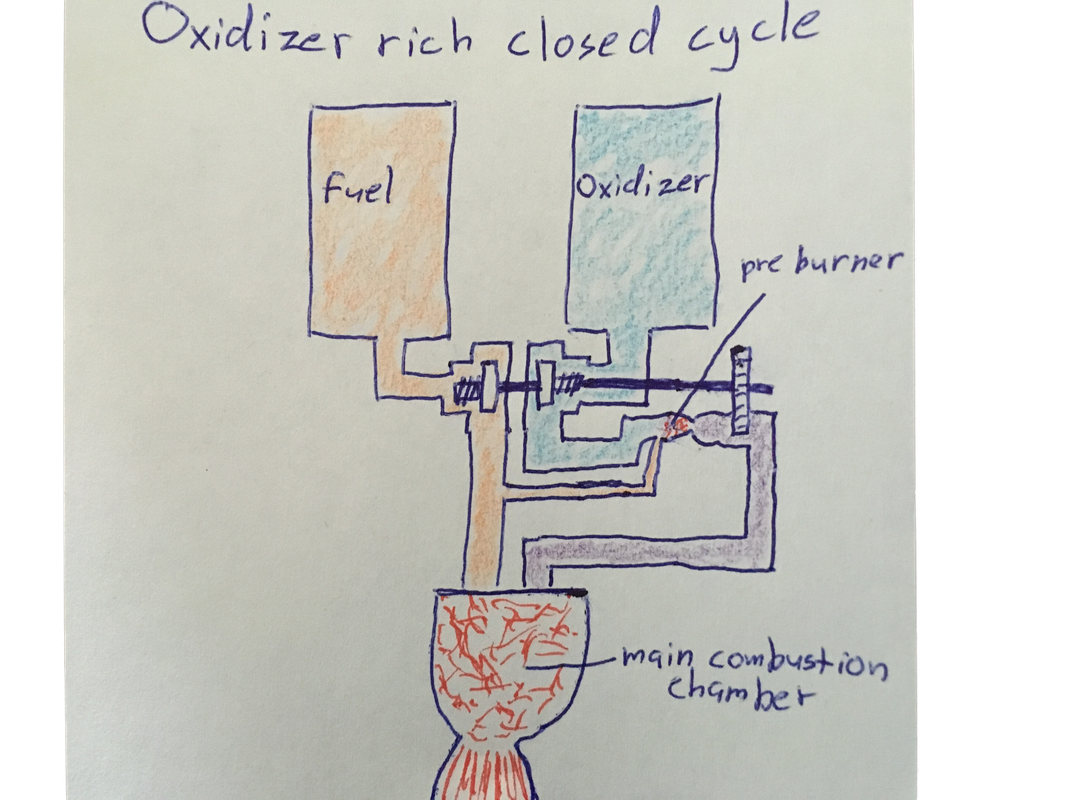
This engine uses the same kind of system as open cycle, but instead of routing only a little bit of oxidizer and fuel to the gas generator, we route all of the oxidizer and little bit of fuel. This burns the oxidizer just enough to power both pumps as gas goes through the turbine. Then the exhaust gas and oxidizer that didn't burn is routed back to the main combustion chamber (along with most of the fuel that went straight there) for the main ignition.
Here the gas generator is called pre burner since it pre burns the oxidizer before the main ignition.
Closed cycle fuel rich engine
Just as the name implies, it works the same way as closed cycle oxidizer rich engine, but fuel pump pumps all of the *fuel*** through the pre burner and **little bit of oxidizer to generate enough gas to spin the turbine. This pre burns the fuel a little before it is being routed the main combustion chamber.
Full flow staged combustion engine
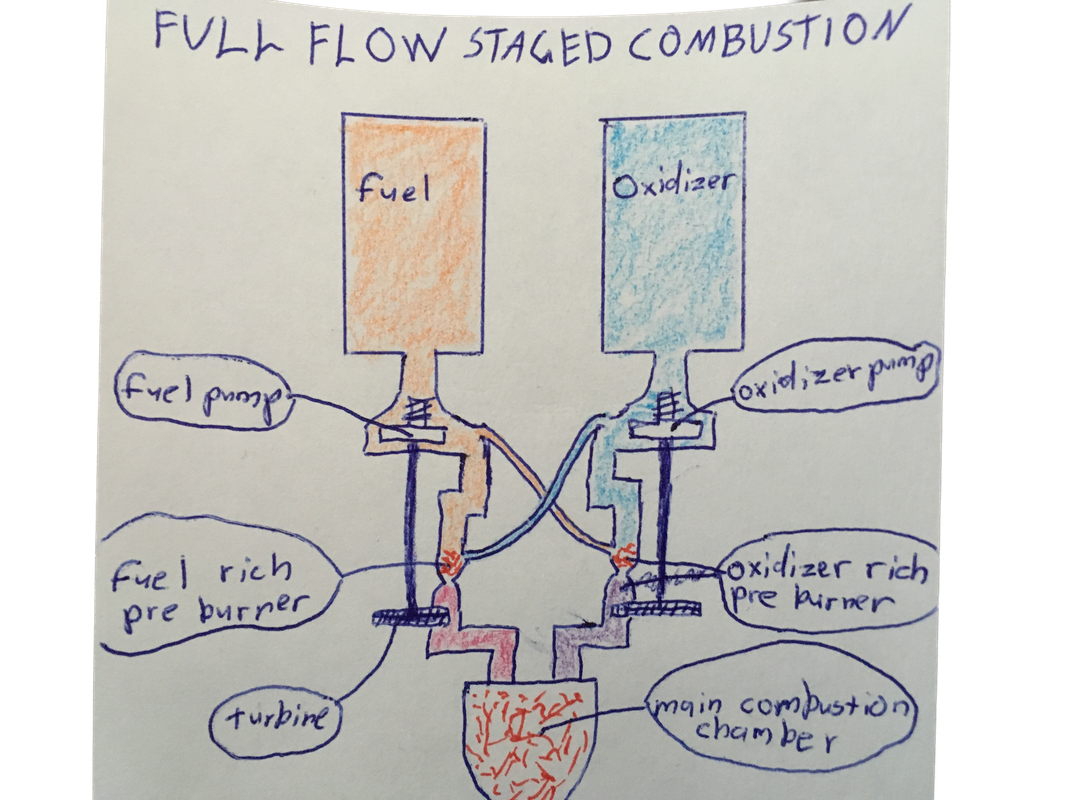
This beast has two individual pumps with their own turbines, where one is powered through fuel rich pre burner and the other through oxidizer rich pre burner. So the oxidizer pump pumps most of the oxidizer through its own per burner and little bit to fuel pump's pre burner. While the fuel pump pumps most of the fuel through its own pre burner and little bit to oxidizer pump's pre burner.
It's a little confusing, but maybe the image makes more sense. Red and purple represent fuel rich gas and oxidizer rich gas.
One advantage of routing both the fuel and oxidizer through pre burners is that they will come to the main combustion chamber as gasses, which mixes them automatically much better than liquid-liquid interaction.
There have been only 3 times this engines has been tried to develop and only one of them has ever flown, which was SpaceX's Raptor engine in 2019. Raptor is designed to carry SpaceX's Starship which has a plan to take humans to Mars.